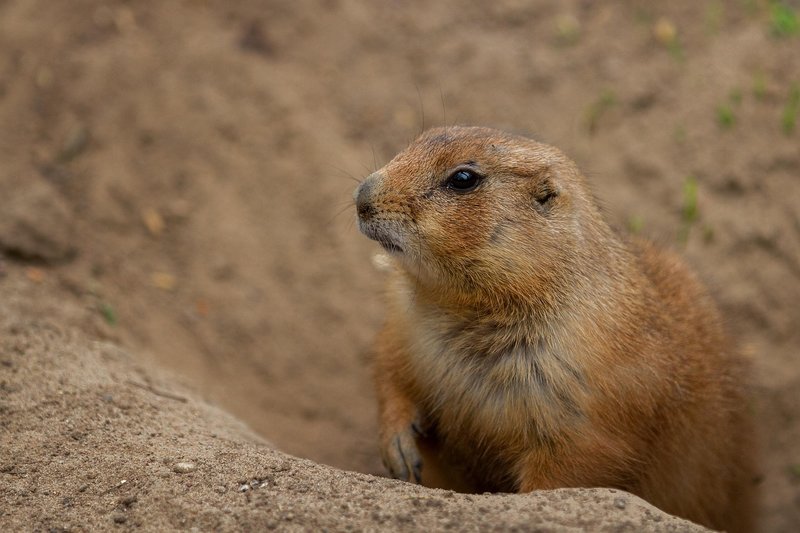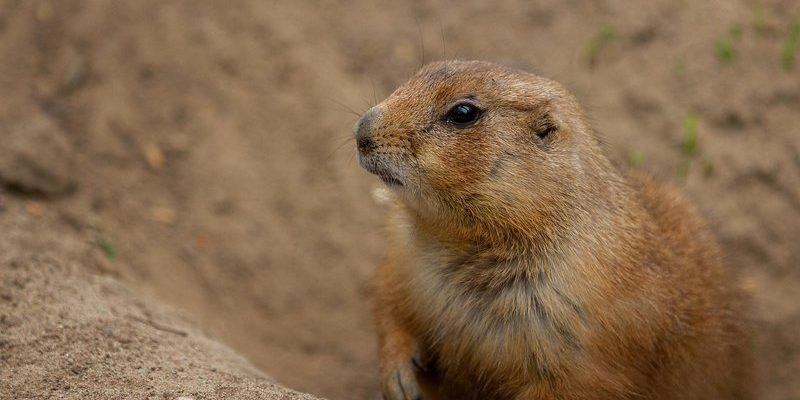
Prairie dogs might not be the first animals that come to mind when you think of wildlife, but these little critters are fascinating creatures with an important role in their ecosystem. Imagine a bustling city filled with tiny volunteers, constantly working together to build homes and socialize. That’s pretty much the life of a prairie dog! Found mainly in North America, they have a charming yet complex social structure that makes them even more interesting.
These social rodents are known for their ability to communicate, dig, and thrive in their habitats. They belong to the family of ground squirrels and live in large colonies called “towns.” Their underground burrows not only provide shelter for themselves but also serve as a home for various other species. You might be surprised to learn how much these small animals affect their environment—and each other’s lives!
Classification and Species
The term “prairie dog” isn’t just a blanket name for one type of animal; it actually encompasses several species. There are five recognized species of prairie dogs, with the most common being the black-tailed prairie dog. The others include the white-tailed, Gunnison’s, Mexican, and Utah prairie dogs.
Each of these species has unique characteristics and adaptations to thrive in their specific environments. For instance, the black-tailed prairie dog is primarily found on the Great Plains, while the white-tailed species prefers the scrublands of the West. Their different habitats influence their behavior, diet, and social structure. Yet, they all share some common traits: a love for digging and a knack for communication.
You might be wondering how these prairie dogs communicate. Well, they use a series of barks, yips, and even specific sounds to warn each other about potential predators. This form of communication is quite sophisticated! With each sound corresponding to different threats, they work like a well-oiled team, alerting their neighbors and keeping their towns safe.
Physical Characteristics
Prairie dogs aren’t just cute and cuddly; they have some impressive physical traits too! Typically, these small mammals weigh about 2 to 3 pounds and measure around 12 to 15 inches in length. They have short legs and a stocky build, which helps them dig efficiently and navigate their burrows. Their fur is usually a sandy-brown color, which helps them blend in with their surroundings.
One notable feature is their large, front incisors—ideal for gnawing on tough vegetation. They primarily eat grasses, seeds, and roots, but they have a particular fondness for clover and dandelions. Speaking of eating, prairie dogs are known to engage in a behavior called “copping,” where they stand upright to look out for dangers while munching their food. It’s an adorable sight!
While they may not seem like the fastest animals on the block, prairie dogs can run swiftly when they need to. They can reach speeds of up to 30 miles per hour, especially when they are in a hurry to escape from predators. Their agility and quick reflexes are vital for survival in the wild.
Habitat and Distribution
Prairie dogs are primarily found in the grasslands and plains of North America, spanning from Canada down through the United States, including places like Texas and Colorado, and into parts of northern Mexico. They thrive in open spaces where they can build their extensive burrow systems. These burrows are not just homes; they also offer a refuge from harsh weather conditions.
These intricate underground cities consist of a network of tunnels and chambers that can be quite extensive. A prairie dog town can have hundreds of individuals living together in a communal lifestyle. Each family group has its own burrow, and they often share the tunnels with other species, such as burrowing owls and snakes. It creates a unique community where everyone contributes to the ecosystem.
Unfortunately, prairie dog populations have faced significant threats over the years due to habitat destruction and disease. Farming, urban expansion, and the use of pesticides have led to a decline in their numbers. Conservation efforts are ongoing to help protect these fascinating animals and their habitats, emphasizing their importance in the ecosystem.
Social Structure and Behavior
One of the most intriguing aspects of prairie dogs is their social structure. They live in colonies that can include dozens to thousands of individuals, depending on the species and location. Within these colonies, prairie dogs form family groups led by a dominant male, with several females and their offspring. This social framework fosters cooperation among members.
Prairie dogs are known for their grooming behaviors, which help strengthen social bonds. They spend time grooming each other, allowing for a communal atmosphere where trust and friendship flourish. In addition, they engage in playful behavior, especially the younger prairie dogs, who can often be seen bouncing around and wrestling with one another.
Communication plays a vital role in their social lives. As mentioned earlier, they use a variety of vocalizations to alert others about danger or to share food sources. When predators approach, prairie dogs will emit specific calls that can indicate the type of threat—be it a hawk, coyote, or human. This level of communication showcases their intelligence and ability to navigate a complex social world.
Diet and Feeding Habits
Prairie dogs are herbivores, which means they primarily eat plants. Their diet consists mainly of grasses, but they’ll enjoy a wide variety of leafy greens, flowers, seeds, and even some roots. During the warmer months, they often feast on tender green shoots, while in winter, they rely on their stored food from the previous growing season.
One interesting aspect of their feeding behavior is that they tend to graze in a very organized manner. Prairie dogs frequently monitor their surroundings for threats while they feed, switching between eating and standing alert. This vigilance is crucial, as they have plenty of animals who consider them a meal.
It’s important to note that prairie dogs play a significant role in their ecosystem through their feeding habits. As they munch on grasses, they help maintain the growth of plant species and ensure that their habitat remains healthy. Their burrowing also aids in aerating the soil, which can promote better plant growth. Thus, while they may seem like small animals, they have a big impact on their environment!
Conservation Status
The conservation status of prairie dogs is a complex issue. While they are not currently classified as endangered, their populations have decreased significantly over the past century. Factors contributing to this decline include habitat loss, hunting, and diseases such as sylvatic plague. These challenges make it essential to monitor and protect prairie dog colonies.
Conservation programs focus on habitat restoration, protecting existing colonies, and promoting awareness about the importance of these creatures. Organizations are working to educate the public on how vital prairie dogs are for their ecosystem. They support other species, such as foxes and badgers, which rely on prairie dogs for food.
In recent years, some areas have implemented protected zones where prairie dogs can thrive without the threat of encroaching urban development. These efforts help maintain biodiversity and promote healthy ecosystems across the landscape. Without prairie dogs, many other species would also suffer, making their conservation a priority.
Interesting Facts about Prairie Dogs
| Species | Black-tailed, White-tailed, Gunnison’s, Mexican, Utah |
| Weight | 2 to 3 pounds |
| Length | 12 to 15 inches |
| Habitat | Grasslands and plains |
| Diet | Grasses and seeds |
| Speed | Up to 30 miles per hour |
| Lifespan | 3 to 5 years in the wild |
Predators of Prairie Dogs
Prairie dogs face several natural predators in their environment. These include hawks and eagles that swoop down from above, as well as coyotes and foxes that hunt on the ground. Each of these predators has its own hunting tactics, making life a bit dangerous for our furry friends.
When a prairie dog spots a predator, it will issue a warning call to alert others in the colony. This alarm instinct is essential. By communicating effectively, prairie dogs improve their chances of survival. Often, if a predator approaches, you’ll notice prairie dogs standing tall on their hind legs, eyes scanning the horizon to detect any danger.
While the potential for predation is a part of life, it also contributes to the prairie dog’s community dynamics. The threats they face lead to stronger group cohesion and better communication skills, ultimately enhancing their chances of survival. This relationship with predators highlights the balance of nature and how every species plays a role in the ecosystem.
FAQ
What is the social structure of prairie dogs like?
Prairie dogs have a complex social structure centered around family groups. Each group consists of a dominant male, several females, and their young. They engage in communal grooming and play, which strengthens their bonds and contributes to a cooperative living environment. Their interactions help maintain a well-functioning community where everyone looks out for each other.
How do prairie dogs communicate with each other?
Prairie dogs communicate through a range of vocalizations, including barks and yips. Each sound corresponds to a specific danger or situation, allowing them to inform others about potential threats quickly. This sophisticated communication showcases their intelligence and helps maintain safety within the colony.
What do prairie dogs eat?
Prairie dogs are herbivores, primarily feeding on grasses, seeds, and roots. They prefer tender green shoots in warmer months, while relying on stored food during the winter. Their grazing habits contribute to the health of the ecosystem, as they help maintain the balance of plant life.
What predators do prairie dogs have?
Prairie dogs are preyed upon by various animals, including hawks, eagles, coyotes, and foxes. Their natural instinct to monitor their surroundings for potential threats is essential for their survival, as they communicate effectively to alert others in their community.
How can prairie dogs affect the ecosystem?
Prairie dogs play a crucial role in their ecosystem by creating burrow systems that provide homes for other species and by promoting plant growth through their grazing habits. Their presence helps maintain biodiversity, making them an essential part of the grassland ecosystem.
How long do prairie dogs live?
In the wild, prairie dogs typically live for about 3 to 5 years. Their lifespan can be shortened by predators, disease, and habitat loss. However, those that survive can contribute significantly to the health of their communities.
What conservation efforts are in place for prairie dogs?
Conservation efforts focus on protecting prairie dog habitats and raising awareness about their importance. This includes habitat restoration, establishing protected zones, and educating the public. By supporting these initiatives, we can help ensure the survival of prairie dog populations.
How fast can prairie dogs run?
Prairie dogs can reach speeds of up to 30 miles per hour when they need to escape from predators. Their agility and quick reflexes are crucial for their survival, enabling them to evade danger effectively.

